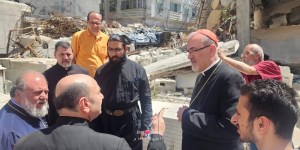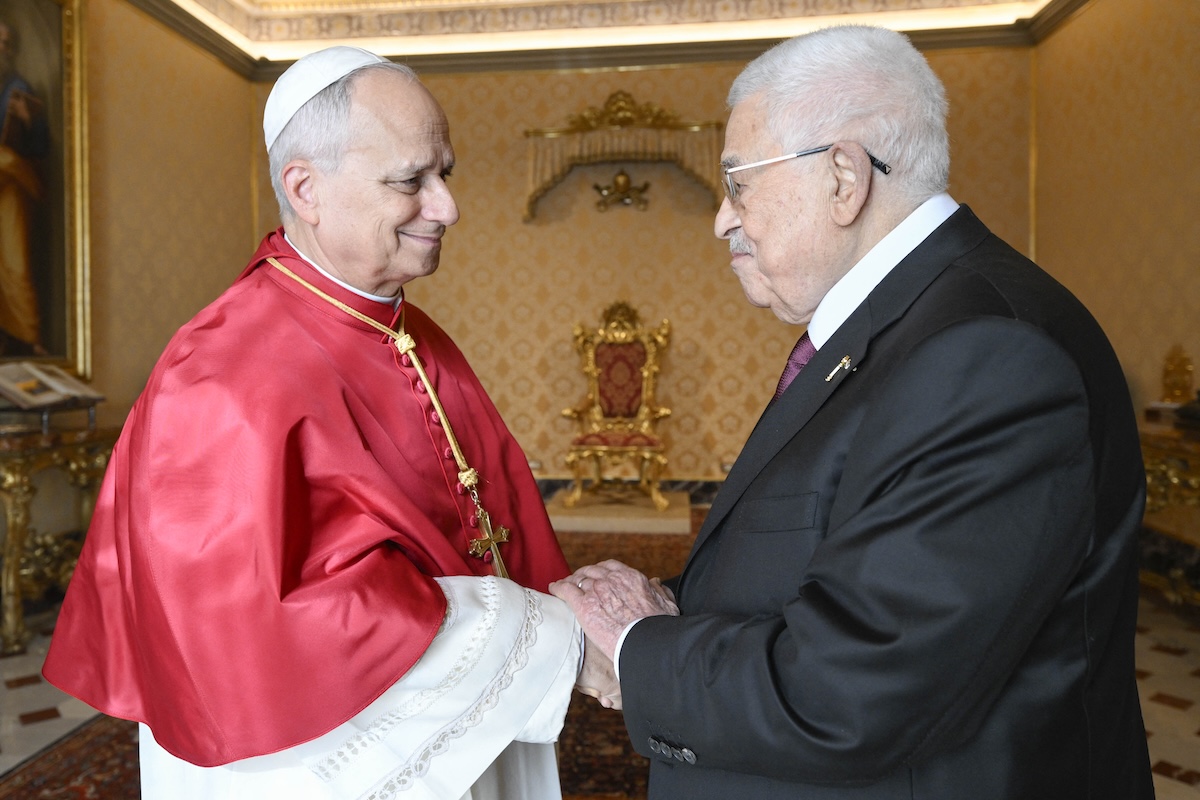On the morning of November 6, 2025, Pope Leo XIV received the President of the State of Palestine, Mahmoud Abbas. The two men have spoken once by phone, but this was the first in-person contact between the new pontiff and the 90-year-old Palestinian leader. It was held in connection with the 10th anniversary of the signing of the Comprehensive Agreement between the Holy See and the State of Palestine (26 June 2015).
Abbas had met with Pope Francis on numerous occasions, and the evening before his meeting with Leo, he visited the Basilica of Saint Mary Major to pay his respects at the tomb of the Argentine pontiff.
The difficult implementation of the peace plan in Gaza was the focus of this first meeting between Abbas and Leo XIV.
“During the cordial talks, it was recognized that there is an urgent need to provide assistance to the civilian population in Gaza and to end the conflict by pursuing a two-State solution,” reported the Holy See said in a brief statement.
The comprehensive agreement between the Holy See and the State of Palestine, signed on June 26, 2015, had the strong support of Pope Francis, who hoped that this agreement guaranteeing the legal status of Christian institutions under Palestinian jurisdiction could also serve as a model for the rest of the Arab world.
Tribute to Pope Francis
Upon his arrival in Rome on the evening of November 5, Mahmoud Abbas visited the Basilica of Saint Mary Major to pay his respects at the tomb of Pope Francis. Due to the war, he was unable to attend Francis’ funeral on April 26 or the installation mass of Pope Leo XIV on May 18.
When questioned by journalists at the entrance to the basilica, Mahmoud Abbas said that during his visits to Italy, he always made a point of “visiting the Holy Father first,” and only then meeting with Italian officials.
“This time, I came first to visit Pope Francis, because I cannot forget what he has done for Palestine, for the Palestinian people. I cannot forget that he recognized Palestine without being asked to do so,” said the Palestinian leader, accompanied by Father Ibrahim Faltas, vicar of the Custody of the Holy Land, who acted as translator for the president.
Abbas made numerous visits to the Vatican during Pope Francis’ pontificate. In particular, he took part in a peace ceremony held in the Vatican Gardens on June 8, 2014, with his Israeli counterpart at the time, Shimon Peres, two weeks after the Argentine pontiff’s visit to the Holy Land.
Pope Francis made several strong statements about the Israeli response to the Hamas terrorist attack, likening the bombings to “terroriafsm” in view of the numerous civilian casualties, and questioning the possibility that the war had fallen into genocide.
Holy See’s constant appeal: 2 states
The current Israeli president, Isaac Herzog, was received by Leo XIV on September 4.
It added, “There was discussion about how to ensure a future for the Palestinian people and about peace and stability in the region, reaffirming the Holy See’s commitment to a two-State solution as the only way out of the current war. Reference was also made to what is happening in the West Bank and to the important question of the city of Jerusalem.”
A leader with limited power
Mahmoud Abbas, who at 90 is one of the oldest leaders on the planet, was elected president of the Palestinian Authority in 2005, two months after the death of Yasser Arafat. His term has been extended several times due to the impossibility of organizing a new presidential election.
He is contested by part of the Palestinian population, but in recent weeks, the formal recognition of the State of Palestine by France, Canada, and the United Kingdom has given him renewed international legitimacy.
Although the United States does not formally recognize Palestine as a sovereign state, Donald Trump nevertheless invited Abbas to the summit in Sharm el-Sheikh, Egypt, on October 13, to endorse his plan to end the war in Gaza. Also present at that summit, Italian Council President Giorgia Meloni will receive Abbas on November 7.
For the moment, the jurisdiction of the State of Palestine extends only to certain municipalities in the West Bank, such as Ramallah (the administrative capital), Jericho, and Bethlehem, the birthplace of Christ. The Gaza Strip, administered by Hamas, has been effectively seceded since the inter-Palestinian conflict of 2007.
Tensions remain high in the region, both in the West Bank, which is plagued by abuses by Israeli settlers, and in the Gaza Strip, which has been devastated by two years of war. Since the ceasefire in Gaza came into effect, Israeli strikes have killed at least 250 people. Meanwhile Hamas is accused of diverting humanitarian aid and carrying out arbitrary executions of its opponents and Palestinians accused of collaborating with the Jewish state.
Pope concerned about a “very fragile” situation
When questioned by journalists on November 4 in Castel Gandolfo about the situation in the Holy Land, Leo XIV welcomed the fact that the first phase of the US-led peace agreements was “still moving forward,” but acknowledged that the situation was “very fragile.”
“We need to see how we can move on to the second phase, addressing the issue of governance and ensuring the rights of all peoples,” he said Tuesday.
The issue of Israeli settlements in the West Bank, which are illegal under international law, is “truly complex,” the Pope said: “Israel said one thing, but sometimes it does another.”
What is needed, the Pope emphasized, is “to work together for justice for all peoples.”

